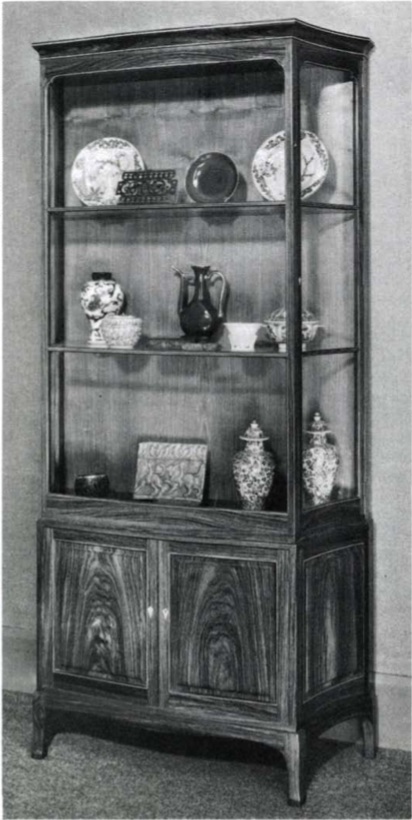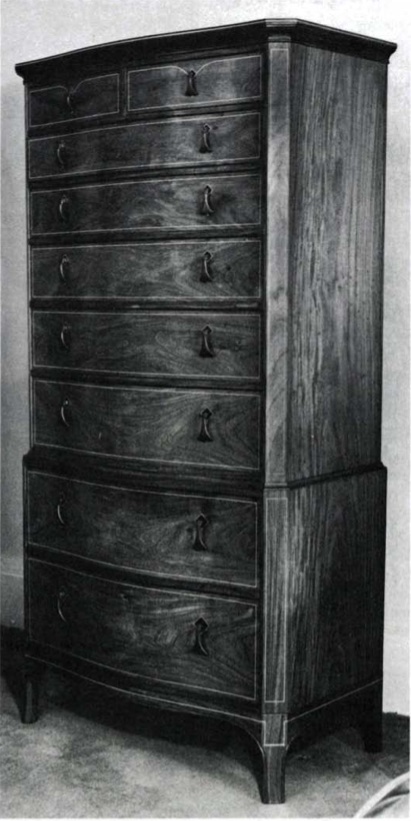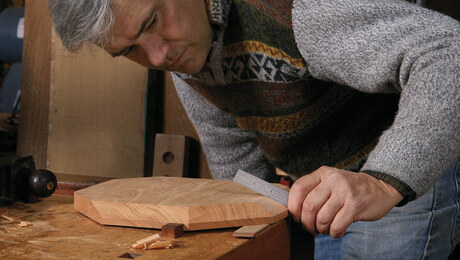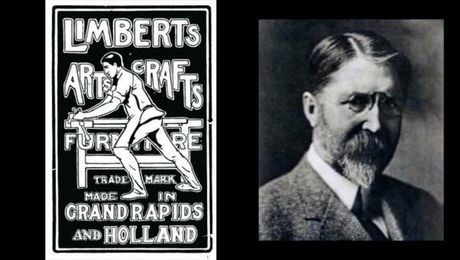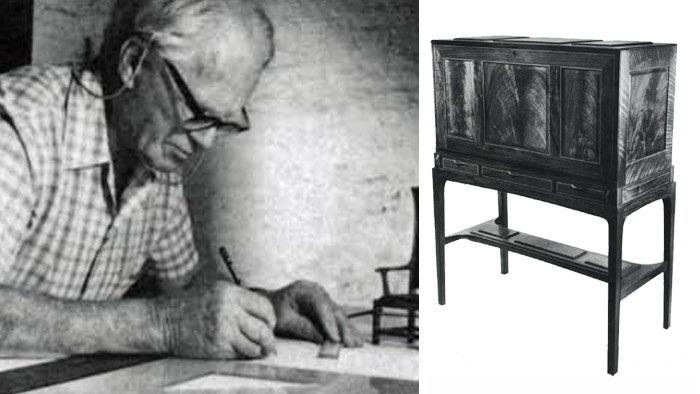
—This text is from FWW #16–Might/June 1979.
In England many individuals think about Edward Barnsley to be the grand outdated man of furnishings designers. What class of designer? Nicely, clearly far outdoors the furnishings commerce. Let’s say he works in what has come to be generally known as the “English handcraftsman’s custom,” which has roots threading again to each 18th-century people or farm furnishings and (I’d reckon extra importantly) to the neo-Classical strictness of spare, unadorned items by Sheraton or Hepplewhite. “Designer and craftsman” is how Barnsley defines himself. I illustrate the purpose with two items of which I feel he’s modestly proud, one from 1924 and one from 1965. He designed and made each.
To our stressed age Barnsley does his greatest to not belong. He has made however one main geographical transfer, throughout southern England from the Cotswolds the place he was introduced up, to Hampshire, the place he settled half a century in the past. His work and life seem like inextricably fused—the pedigree of the combination goes again to the Victorian craftsmen-philosophers John Ruskin and William Morris.
Like many lesser and forgotten males, William Morris chilly-shouldered the Victorian industrial scene. He took off for the unspoiled Cotswold countryside and have become what’s immediately known as a guru. However not like Morris, Barnsley had no urgent must insurgent. In 1900 he was born into a practice that suited his temperament and his skills. His future (a tough one) has been to stay trustworthy to that place, so far as attainable.
On the middle of that custom is Ernest Gimson, “a craftsman endowed with the flexibility of a designer,” who introduced a person genius to furnishings making that had been missing because the dying of Sheraton. Gimson, who had met Morris in 1884 and had been fired by his luminous imaginative and prescient, ardour, and sensible drive, was the main spirit within the Gloucestershire villages the place Barnsley’s father, Sidney, and his uncle, Ernest, each certified architects, had put down roots. Gimson took on a pupil named Geoffrey Lupton, and in the middle of time, Lupton, initially a educated engineer and an ready craftsman, started working a small furnishings workshop at Froxfield, a scattering of homes and farms above the market city of Petersfield (about 60 miles southwest of London). After working alongside his father and spending a yr on the Central Faculty of Arts and Crafts in London, Barnsley, in 1919, was apprenticed to Lupton at Froxfield. In 1923 he rented the store from Lupton and three years later, backed by his father, purchased the place. Since that date, Barnsley has enlarged it. Over time Barnsley in his flip has taken on many pupil-apprentices and labored carefully with a number of craftsmen. The quantity has fluctuated—as I write, three craftsmen and one apprentice stay.
The Barnsleys’ residence and the store are pretty much as good as joined one to the opposite, though to enter the store you stroll by means of the open air, over a gravel path on the backyard facet. A sizeable vegetable backyard, industriously cared for, some superbly saved herbaceous borders, and an uneven garden slope right down to a retaining wall. At a person’s top under lies a slender terrace the place fruit timber in summer season shade the tough grass. Past these limits, the land plunges and funnels towards Petersfield. Wanting again uphill, home and workshop sit comfortably simply above the rim of the escarpment.
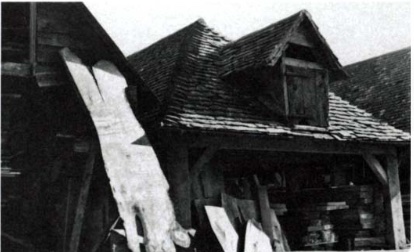
Lupton designed the Barnsley residence, which from the skin seems a lot bigger than whenever you go indoors. A compact kitchen huddles subsequent to the lounge, a plain, all-purpose area—the temper set partly by the satisfying quantity and partly by the delicate tones of the woods used for furnishings, doorways, and ground.
A number of focal factors compete mildly for one’s consideration: a portly oak sideboard dresser made by Barnsley’s father. Under a bowed lintel, a finely proportioned fundamental window. The beneficiant open fireplace, rebuilt by Barnsley and doubtless as environment friendly as an open hearth could be. A walnut bookcase-cabinet rests unobtrusively between huge doorways.
On both facet of the fireplace you would possibly discover a few walnut burls, these fascinating and freaky issues sliced from outgrowths on the base of some walnut timber, in part nicely above an inch thick. The convoluted swirlings evoke for me these patterns of human lungs seen in medical textbooks. Some years in the past Barnsley held them up for my spouse and myself to have a look at: He studied our faces as if to find whether or not we shared the awe he appeared to really feel. They have to signify a deep involvement with the natural and replicate his philosophy of wholeness. They may also be considered the uncooked nuggets from which walnut figuring is mined.
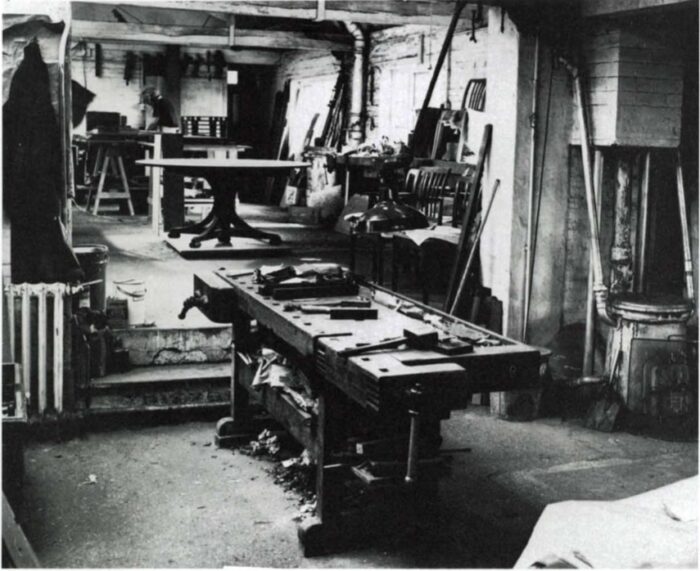
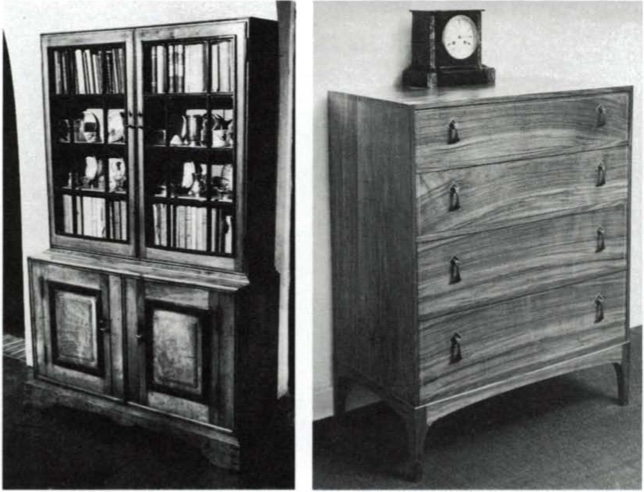
From the desk by the broad living-room window, in addition to from the home windows by Barnsley’s drawing desk, the attention travels over the treetops in direction of a distant patchwork of husbanded land. The views encourage the thoughts to loosen up and stretch itself. “Might something be extra stunning?” Barnsley asks rhetorically.
On a transparent day, I unwind as I gaze past Barnsley’s desk at these views. My gaze on a mournful day turns indoors and down on the ground. Nice broad oak boards, mellow and burnished. Timeless impregnability—until the air and sky are ripped open by a low-flying jet.
Regardless of his 78 years, Barnsley remains to be an lively man who is aware of recharge his batteries with efficient catnaps. On the correct season he could also be up earlier than six. Compost to be moved. Backyard timber to be felled and bow-sawn, cut up, then stacked in a measured method for hearty winter fires.
You move on one path to the store a excessive and meticulously ordered wall of logs. Barnsley leads the best way. Saunters into the principle L-shaped store. Strikes with the agency, composed, relaxed motions of an open-air man. A fluent, witty, and entertaining host he could be. Additionally a thoughtful-complicated talker able to ruminate on his attachment to nature, or rake over the embers of the unbiased designer-craftsman’s predicament in a philistine world. However right here within the store there are lengthy speechmuch less intervals, ample pauses for one to relish the textures and tones of walnut, oak, cherry, cedar, elm, yew, rosewood or mahogany. Beech and ash usually are not for him. Time to appraise a chair, a secretaire, a cupboard or bureau or sidetable, no matter piece or set of items is nearing completion or, if full, awaiting supply.
Two craftsmen are utilizing their practiced fingers; one other concentrates over a machine. A machine? That’s the phrase the Froxfield craftsmen use. However Barnsley insists we will discuss of instruments or powered instruments.
“Important to name these items instruments, not machines. The phrase instruments conveys one thing totally different from the phrase machine. Nice ability remains to be wanted to make use of ‘energy’ instruments however in a special kind to handwork.” A lot for semantic niceties. Younger apprentices coming to Froxfield be taught to do issues the onerous method. This enables them to know the issues they face. Says one of many craftsmen,”Afterward once they’ll be utilizing machines, having realized the essential method with instruments, they’ll use the machines extra sensibly.”
These machines have been introduced in round 1950. Considerably earlier got here the primary arrivals, initially a treadle round noticed. All fingers aboard if something of any thickness needed to be lower. Later, a mortiser was purchased. “You heaved on the deal with to chop out the mortise. You turned a deal with to maneuver the mattress alongside to chop longer mortises. Not a really profitable gadget.” (Now they’re on their second hole chisel mortiser, “a gorgeous factor. Cuts more true than a person might ever lower.”) A round noticed pushed by a gasoline motor subsequent appeared. Later, electrical energy discovered its method in: A jointer and thickness planer “took the onerous graft out of planing”; a bandsaw, panel sander, spindle-molder, and the fashionable mortiser discovered area.
“It’s attainable,” Barnsley now says, “in a day of eight hours to hold out with excessive exactitude as a lot work as might be carried out in two or three weeks by hand.” The voice, I believe (maybe wrongly) is that of a reluctant convert. There should have been a lot heart-searching earlier than the powered instruments, to not point out blockboard and artificial glues, pressured their method into the Froxfield workshop. Plywood nonetheless sticks in Barnsley’s throat, though his craftsmen don’t thoughts it. The strategies of bent lamination, the place you resaw your individual laminates, are very a lot in favor.
We’re standing near a set of chairs and the best way they’re stacked makes a captivating sample. Barnsley rests a forefinger on the cherry prime again rail of one of many chairs. “Simply take a look at this—” Barnsley marvels, so it appears, that any man ought to possess the unfaltering potential of manufacturing similar curves. His tone additionally conveys unstinted reward for the persistence, dexterity, and accuracy of his craftsmen.

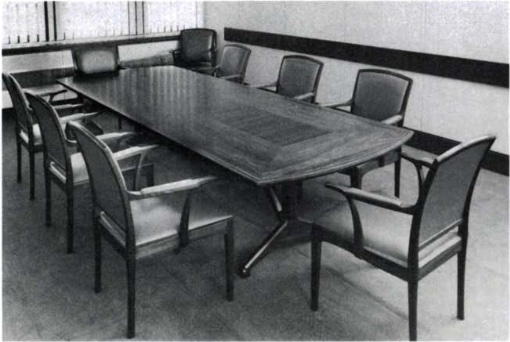
Barnsley’s chairbacks (these have been made in 1964 of rosewood for the eating room of the Courtaulds Firm in London) have an agreeable orthopedic high quality—a faintly convex profile that helps well-worn vertebrae. Their sleek arms are paying homage to some Seventeenth-century Windsors. The desk prime is veneer on plywood, with sycamore inlay across the perimeter. A kind for the again rail is made, set out, and molded on a jig. A high-quality bandsaw speeds replication. Earlier than you sandpaper again to the road by hand, a sanding block revolving at about 1,000 rpm is used. Do I solely think about that an undertone of regret or nostalgia weighs on Barnsley? Shouldn’t every chair current a barely seen flaw to distinguish it from the following?
The stack of chairs that seized my eye awaits the becoming of their arms. Joints on the seat rails have already been prepared; this overcomes a few of the awkwardness of dealing with a job that doesn’t sit on the bench very nicely.
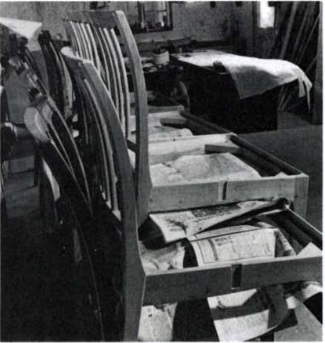
A personal eating room could require 4 chairs and two armchairs. For a boardroom of Courtaulds, a number one British firm, Barnsley’s store produced two dozen similar chairs. In the identical yr, 1964, Froxfield made eating room furnishings for a similar agency. The store occasionally produces ceremonial chairs too—one, with a prayer desk, was commissioned by Canterbury Cathedral.
Now we have now left the principle retailers and linger in a backwater off the passage resulting in Barnsley’s design room. I discover myself a easy, sensible piece which could be known as a dangling bureau.
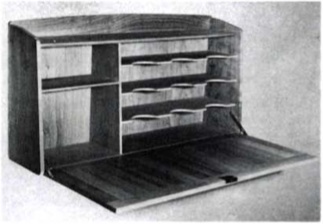
5 of those utilitarian paper-tidies, in cherry, are destined for the little kids of one of many many Barnsley purchasers. The shelf fronts are scooped to offer quick access to papers and paperwork. The design conforms to a Barnsley maxim: health for function and pleasure in use. Not solely the precise wants of shoppers however the website or possible website of a chunk is taken into consideration. A protracted rosewood sideboard (pictured above) was initially deliberate to be used in a slender hall, although it’s now at residence in a spacious lounge. Barnsley thinks of this specific sideboard as “one in every of our greatest items.” Almost all his furnishings is made to measure.
On turning round, there watching me is an distinctive artifact—a no-money-spared writing cupboard that would make a fame all by itself. It has attracted a well-favored title, the Jubilee writing cupboard or the Jubilee Piece.
Jubilee refers back to the twenty fifth anniversary of Queen Elizabeth II’s coronation. The cupboard went as much as London and was proven there in 1977 at a Masterpiece Exhibition mounted by the Crafts Advisory Committee. Some admirers of Barnsley’s work have used the phrase “ornate” to explain this piece, which actually could transcend his common sober austerity. A matter of style; for me, “ornate” is a bit too sturdy.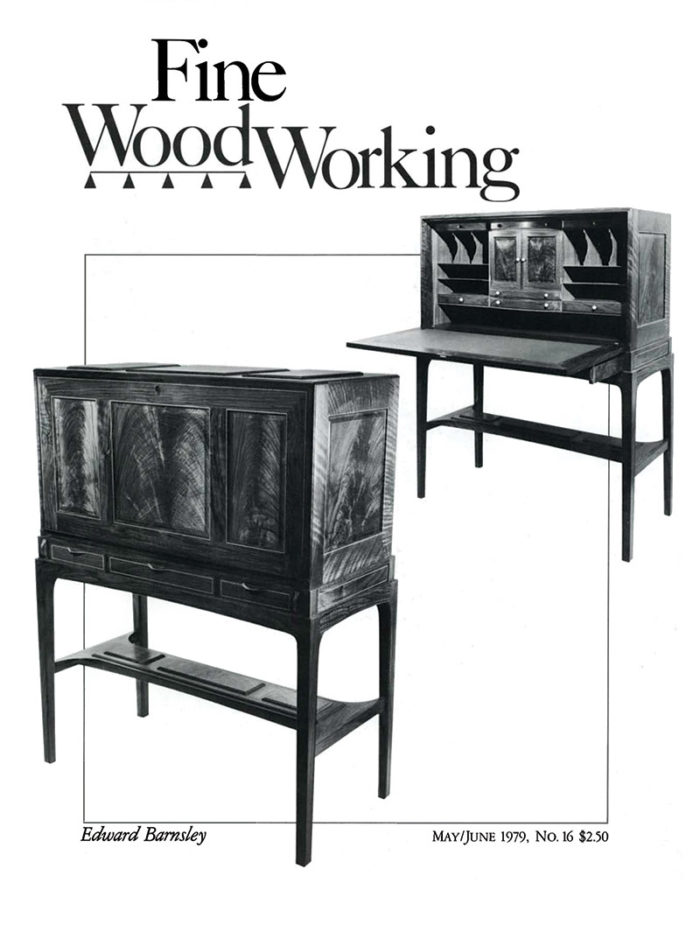 After I’ve studied the cupboard from a multiplicity of angles, Barnsley, who’s given to understatement, says,”I feel we’ve acquired it about proper.” Half evaluation, half interrogation. There may be an unstated query regarding its undoubted excellencies and attainable infelicities. The beneath stretcher has been an excellent headache.
After I’ve studied the cupboard from a multiplicity of angles, Barnsley, who’s given to understatement, says,”I feel we’ve acquired it about proper.” Half evaluation, half interrogation. There may be an unstated query regarding its undoubted excellencies and attainable infelicities. The beneath stretcher has been an excellent headache.
Backside buildings is usually a fascinating problem. The right way to forestall knees colliding with important elements? The right way to make it simpler to comb beneath or permit chairs to be positioned under a prime? Within the case of tables, Barnsley has produced some eloquently useful concepts, for instance, the pedestal helps with quarter-legs hovering upwards from low-pitched straight toes.
The Jubilee writing cupboard made its debut with a framed-up construction comprising three panels, raised and fielded, with the top stretchers mortised and tenoned into the legs. Nook brackets have been tongued and glued into the corners of the framing—on this method the lengthy, broad rail swells at each ends.
A number of experiments led to this answer. At one stage, borrowing from one in every of Barnsley’s well-tested designs went ahead into the store. A hooped stretcher was to comb upward, vaulting beneath the middle of the underside of the automotivecase. The top stretchers have been made and the rail was laminated. However Barnsley was not proud of the impact. The subsequent transfer included making a again stretcher and clamping it to the rear legs of the stand. The hooped stretcher rail was tipped into the horizontal aircraft and its ends set in opposition to the entrance legs of the bottom. The geometry now was just like that of a small rosewood facet desk (under) made in 1962.

Once more Barnsley was dissatisfied. Maybe the sweeping curve clashed with the strict classical traces of the cupboard as an entire. For no matter causes, the seduction of a curving stretcher was deserted.
The change between visualization on the drafting board and the setting out of the formed pans is all within the day’s work. What occurred subsequent was much less predictable, given the affected person thought and infinite care taken over procurement and storage of timber at Froxfield: the woodworker’s nightmare—twisting.
Barnsley shakes his head and mutters darkly, “Central heating has a method of shrinking panels disastrously. Disastrously.” In some way, for the cupboard’s fall entrance or flap, in addition to for the remainder of the carcase, shrinkage was to be outmaneuvered, regardless of its being product of stable wooden, not veneer. Seasoning, maybe kilning, and exacting acclimatization absolutely would do the trick if the suitable timber have been chosen. “There’s a spot for each piece of wooden and a chunk of wooden for each job—if yow will discover it,” Barnsley says.
Barnsley and his foreman-manager, Bert Upton (at Froxdiscipline since 1924), are nice squirrels with regards to timber hoarding. This goes again to the times when all the pieces was lower from the stable and it was obligatory at all times to have prepared a provide of naturally curved items acceptable for a repertoire of predictable shapes. These days, off-cuts are prone to serve for outdoor laminations or stable fielded panels and hoarded to be used on particular events. Making the Jubilee writing cupboard was simply such an event.
For the cupboard’s fielded panels, a sort of figured walnut spoken of as “flames” or “feathers” was used. Flames are taken from the junction the place the tree forks. To give you matching flames was a teasing demand, however the giant entrance and rear central panels and the top panels of the cupboard all have matching determine.
However I anticipate. The English walnut earmarked for the job had been saved in 1-in. or 3/4-in. boards for the previous 20 years at Froxfield. For the bureau’s inside elements, wooden that had reached Froxfield 30 or possibly 40 years in the past was drawn upon. The actual oak log that was used got here quartersawn, permitting the fascinating rays which seem as a silvery splash to be exhibited to greatest impact. Upton, who truly made the bottom with its three drawers and the weird stretcher rail, declares that this oak was “great stuff”; great, though the sawyers had accomplished their worst and the worms had added theirs. One fringe of the boards, whose thickness tapered from 1/2. in. to 1/4 in., had been utterly eaten away. Nonetheless, wonderful oak lining was produced. As a part of Barnsley’s fining-down coverage, the liner measured not more than 1/8 in. thick. This raised peculiar difficulties. Preserving it out of winding throughout gluing wasn’t simple. Had the oak been a hair’s breadth thinner, conventional joints possibly couldn’t have been used.
The oak, like the remainder of the timber chosen for the job, got here indoors some months earlier than reaching the planer. This permitted moisture ranges to drop as little as attainable. George Taylor (at Froxfield since 1937) made the highest carcase incorporating the bureau and the bureau’s entrance flap. He set about producing the body and the stable panels with their unique flame figuring. The flap lay round for some months and steadily there was no denying that the body rails had moved. “They took this curve on. They have been taking up this set,” Taylor remembers.
A blow. No choice however to backtrack. The flap was made up once more within the stable. But once more the walnut body twisted. “A part of the stubbornness of the wooden,” Taylor feedback, with a smile. “You see, the flap is hinged solely at one facet and there’s nothing to carry it besides the body. And the panels have been so sturdy they pulled the body out of true.”
Retreat to lamination. A skinny marine ply needed to be sandwiched up and confronted with walnut. So the body of the flap is, to cite Taylor once more, “impervious to all of the curious queer creepies you get in wooden.”
Now open the flap of the lengthy cautious take a look at the stable panels of the bureau doorways. These too have flames which come from single items of walnut lower by means of and opened up just like the leaves of a guide. From the 2 fields that face each other come totally different reflections. One face displays extra mild, the opposite absorbs extra mild. A negative-positive impact outcomes: Grain on the left-hand panel goes primarily downwards; grain on the suitable hand panel primarily upwards.
Some scraps and shavings in close-up: On the bureau doorways there’s a little step between the fielded floor and the curved shoulder, then an additional step that goes into the groove of the body. The stringing of sycamore with ebony diagonals is what Barnsley calls a “dark-light-dark-Iight inlay.” Its function is to stipulate or include given areas of labor. “Like Picadilly at evening,” individuals used to say. “My mother-in-law in addition to my spouse expressed criticism of those intermittent inlaid traces,” Barnsley remembers. He listened. His most attribute signature immediately is unbroken white stringing.
Barnsley sums up the Jubilee writing cupboard as an express “second try to maneuver past a 1905 design” of his father’s. This, above all, concerned common fining down. Sides of chests which was 7/8 in. at the moment are 5/8 in. Legs of cupboards are down from 2-1/4 in. to 1-3/4 in. The scale of the stringing have been “thought to make the inlays too outstanding.” Heeding crucial voices, Barnsley says he got here to cut back the width of such ornamental components by “50% to 65%, in response to the general dimensions of a chunk.”
A lesser signature is the design of Barnsley’s delicate, elegant, and sensible handles. On the Jubilee writing cupboard these have been let in, however they seem to have been carved from the stable. His modern handles are positioned on the entrance tops of the drawers. Earlier they have been sited at mid-level. The higher surfaces are gently dished. The inlay of sycamore flows by means of the swell of the deal with. It’s shaped by dry warmth or maybe just a little steam. The grooves are lower with a high-quality round noticed, besides the place corners or shapes are concerned. Then a scratch-stock is utilized by hand.
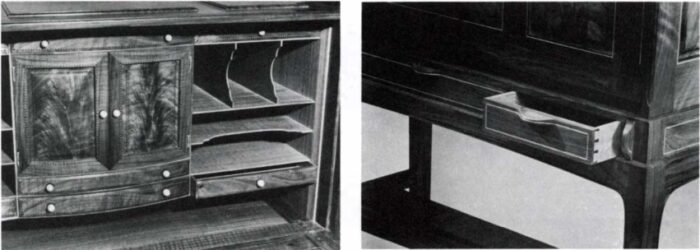
As a rule of thumb, every craftsman makes a chunk from begin to end. “It’s yours and you’ll stand by your individual work,” says Barnsley. However for greater orders everybody within the store could get entangled. The boardroom items for Courtaulds have been made by Oskar Dawson, Upton, and Taylor. The Jubilee cupboard is the work of Upton and Taylor. Dawson tooled the ivory knobs: “Good delicate stuff to show.” Mark Nicholas, the apprentice, lower recesses to obtain divisions forming the pigeonholes and did different odd jobs. Barnsley added ending touches to the hinges—submitting and rounding and incising delicate traces on them.
Barnsley sums up the previous 55 years: “Many of the work from 1924 till 1945 adopted carefully on Gimson’s and the brothers Ernest and Sidney Barnsley” (his father and uncle).”Developments as from 1945 have primarily taken the type of lightening the work and introducing curves.” Powered instruments and lamination made curved work sensible and financial. Slimming down included the elimination of stretchers to brace chair legs, use of the sturdy gun-stock joint, and diminution of wooden thicknesses.
|
|
|
Barnsley, I really feel, was by no means drawn towards the imaginative flights of British innovators equivalent to Ambrose Heal and Gordon Russell. He dismisses a lot of up to date furnishings design as ephemeral. However phrases, his or mine, merely supply a faint shadow of the person. Probably the most genuine of Barnsley’s many selves can solely be acknowledged by these uncovered to the affect of his work.
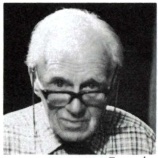
Join eletters immediately and get the newest strategies and how-to from Tremendous Woodworking, plus particular provides.

